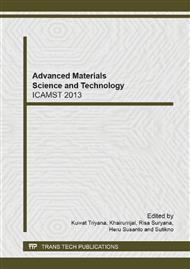p.375
p.381
p.385
p.391
p.396
p.401
p.406
p.410
p.414
Modeling of Magnetorheological Damper Using Back Propagation Neural Network
Abstract:
This paper presents a new approach to model magneto-rheological (MR) dampers for semi-active suspension systems. The neural network method using adaptive back-propagation learning algorithm real is proposed. The experimental data collected from suspension test machine consist in time histories of current, displacement, velocity and force measured both for constant and variable current. The model parameters are determined using a set of experimental measurements corresponding to different current constant values. It has been shown that the damper response can be satisfactorily predicted with this model.
Info:
Periodical:
Pages:
396-400
Citation:
Online since:
February 2014
Authors:
Price:
Сopyright:
© 2014 Trans Tech Publications Ltd. All Rights Reserved
Share:
Citation:


